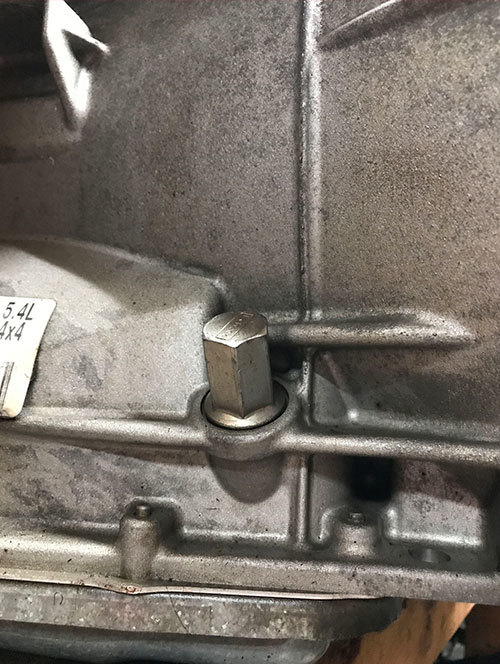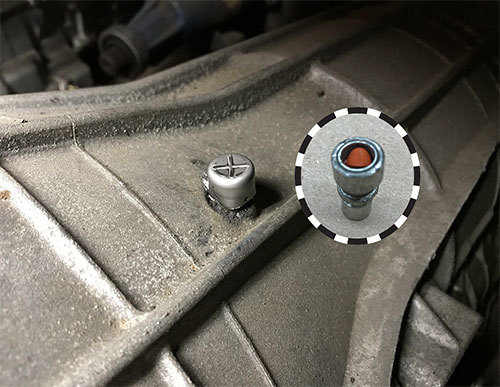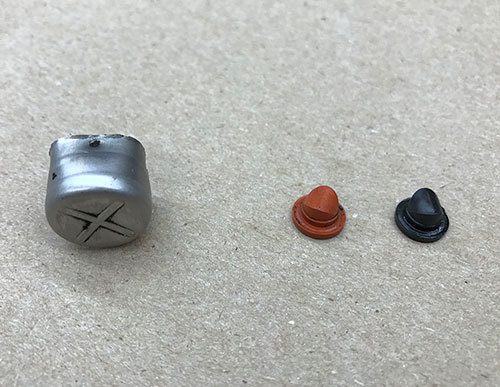August 15, 2022
Troubleshooting Ford 6R80 & 6R140 Timing-Related Shift Issues
Jim Dial
A 2009 Ford F150 equipped with a 5.4L V8 engine and 6R80 transmission was brought to a shop with the complaint of a transmission leak. The customer said the leak was intermittent; sometimes the vehicle would go for weeks without leaking, and sometimes it would leak out a puddle more than a foot in diameter in a short period of time.
When the vehicle was inspected on a lift, it appeared to have multiple leaks, but the most prominent leak seemed to be coming from the case connector. A data search found three bulletins related to a leak at the case connector:
With this information in hand, the connector on the customer’s transmission was replaced with the latest version, and dye was added to the fluid for continued monitoring.
In a day or two, the truck returned with the same leak. The transmission was cleaned off and left on the lift. The vehicle sat on the lift for several days and no leak returned. The customer’s words about the leak being intermittent were becoming reality. The vehicle was removed from the lift, taken on a short road test and parked in the lot over a large piece of cardboard. After a short period of time, a spot appeared on the cardboard. When the vehicle was returned to the lift for inspection, the dye showed multiple leaks.
The 6R80 transmission does not have a conventional dipstick. A short, plastic dipstick plug is located in the hole in the case where the dipstick tube would normally be found (Figure 1).
| Figure 1 — 6R80 Dipstick Plug |
|---|
 |
When the technician removed the plug to check the fluid level, a loud “whoosh” was heard as pressure exited the sump. This was odd, because the transmission vent located at the top front of the transmission should exhaust any pressure. Unfortunately, the vent is almost impossible to see when the transmission is in the vehicle.
| Figure 2 — 6R80 Vent Cap with Red Check Valve |
|---|
 |
The technician remembered having issues with the filter in an AODE vent plugging up, resulting in the same problem (see Transmission Digest November 2000 article “AODE Filter Blues”). He located a 6R80 core and removed the cap for the vent. Inside was a red rubber check valve, possibly put there to prevent water from entering through the vent (Figure 2).
In this customer’s case, the valve was holding back enough pressure to force leaks from multiple locations.
| Figure 3 — Vent Check Valves Can Be Red or Black |
|---|
 |
The valve can be easily removed from the vent with a pick. If you happen to remove the entire vent from the transmission when you are attempting to remove only the cap, a plastic GM TH350 vent can be substituted without issue. You may want to remove the check valve from the vent before attempting to fix any of the leaks. That may be all that is necessary to fix your leak issues.
Ed Lee is a recently retired Sonnax technical specialist who writes on issues of interest to torque converter rebuilders and member of the Sonnax TASC Force (Technical Automotive Specialties Committee), a group of recognized industry technical specialists, transmission rebuilders and Sonnax Industries Inc. technicians.
August 15, 2022
Jim Dial
While Sonnax makes every effort to ensure the accuracy of technical articles at time of publication, we assume no liability for inaccuracies or for information which may become outdated or obsolete over time.